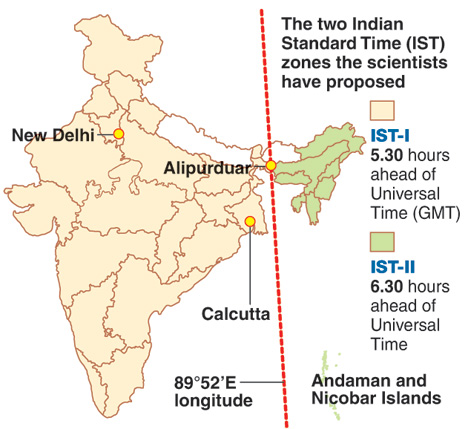The Union science and technology ministry told Parliament on Wednesday that a government panel had recommended against creating two separate time zones in India citing “strategic reasons”.
The science and technology minister Harsh Vardhan said the idea of creating two time zones, discussed several times by researchers over the past three decades, had been examined by a “high-level” panel, but did not say when it was formed.
Vardhan, in a written response to a question on demands for a separate time zone from the northeastern states, said the high-level government panel “after considering the issue recommended not to have two time zones for India for strategic reasons”.
Although energy researchers have been debating the merits of creating two time zones in India since the late-1980s, the proposals have remained confined to academic journals and been consistently resisted by the government.
The science and technology ministry had in 2015, similarly responding to a Parliament question, also said a government panel had examined the issue in 2002 and “strongly rejected” the idea.
The 2002 panel had cited concerns about economic viability and the “chaos and confusion” it might create in the railways and bus transport sectors but had asked the northeastern states to consider advancing their work timings.
In June this year, government scientists at the National Physical Laboratory, New Delhi, had proposed two time zones with a demarcation line along the Bengal-Assam border, saying the proposal specifically addresses concerns that had stalled earlier similar proposals. The NPL team had identified the 89 degrees 52 minutes east longitude near Alipurduar in Bengal as the line separating two Indian Standard Times — IST1 on the west of the line 5.30 hours ahead of GMT, and IST2, east of the line 6.30 hours ahead of GMT.
They had said the cumulative electricity savings would be 20 million kilowatt hours — equivalent to running 20 million 1,000-watt water-heaters or 10 million 2,000-watt air-conditioners an hour.
A. Sengupta, a senior scientist formerly at the NPL’s time division, said on Wednesday he was not surprised by the government’s response to the proposal. “This has been debated for nearly 30 years. There are perceptions about the operational difficulties that two time zones will entail,” Sengupta said.











